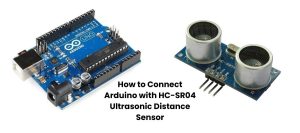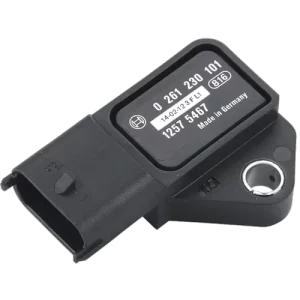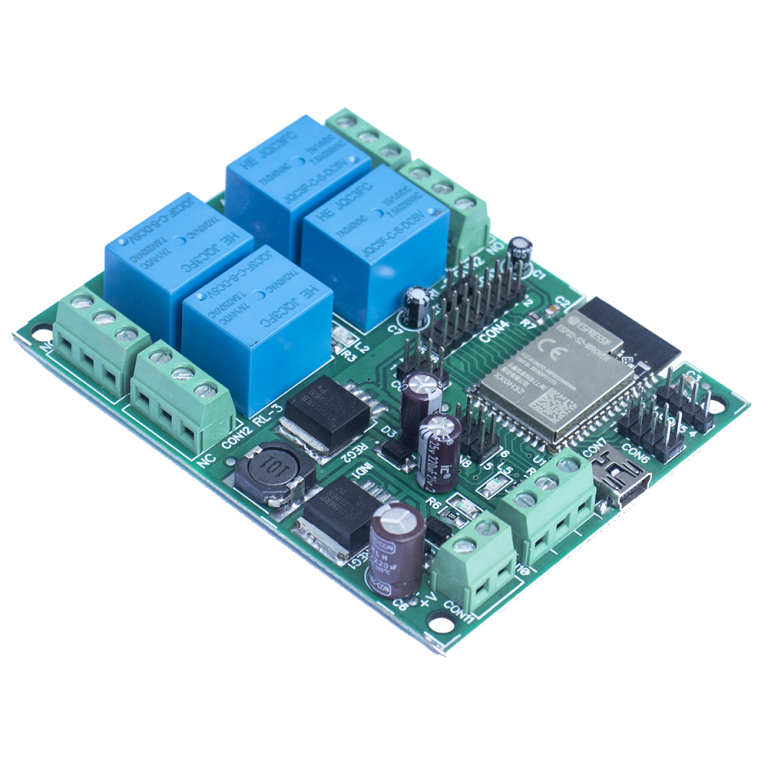Understanding Pressure Sensors
What is a Pressure Sensor?
A pressure sensor serves as a device designed to detect and measure pressure, quantified as the force applied over a specific area. This ingenious tool can gauge pressure in both gases and liquids, translating the gathered physical data into electronic signals.
Exploring the Array of Pressure Sensors
Diverse types of pressure sensors exist, each rooted in distinct underlying technologies. Here are some noteworthy categories:
1. Strain Gauge Pressure Sensors
2. Piezoelectric Pressure Sensors
3. Capacitive Pressure Sensors
4. Manometers
5. Vacuum (Pirani) Pressure Sensors
6. Bourdon Tube Pressure Sensors
7. Aneroid Barometer Pressure Sensors
These sensors operate on varied principles, catering to a spectrum of applications — from industrial engines to the measurement of oil and gas.
Pressure sensors play a pivotal role in various applications, each type boasting unique advantages and disadvantages. Let’s delve into the intricacies of some common pressure sensor types:
1. Strain Gauge Pressure Sensors
These sensors employ a strain gauge, a mechanical apparatus that undergoes minute expansions and contractions in response to applied or relieved pressure. The sensor measures these deformations, calibrating them to indicate the exerted pressure, and subsequently translates these changes into electric signals.
Advantages:
- Highly sensitive and accurate
- Capable of measuring both static and dynamic pressures
Disadvantages:
- Susceptible to temperature changes
- Limited measurement range
2. Capacitive Pressure Sensors
Utilizing capacitance changes, these sensors provide an alternative method to measure pressure differentials. Their design allows for precision in detecting variations in pressure.
Advantages:
- High accuracy and resolution
- Low power consumption
- Stable output over time
Disadvantages:
- Prone to electromagnetic interference
- Exhibits non-linearity and sensitivity to vibration
3. Piezoelectric Pressure Sensors
These sensors harness the piezoelectric effect to generate electric charge in response to applied pressure. This mechanism ensures a swift and accurate representation of pressure changes.
Advantages:
- High sensitivity and fast response time
- Effective for measuring static and dynamic pressures
Disadvantages:
- Vulnerable to temperature changes
- Limited measurement range
4. Piezoresistive Pressure Sensors
Employing the resistive properties of materials, these sensors detect pressure-induced changes in resistance. This alteration in resistance is then translated into an electronic signal, offering a reliable pressure reading.
Advantages:
- Cost-effective compared to capacitive sensors
- Offers high-resolution measurements
- Resilient to shock, vibration, and dynamic pressure changes
Disadvantages:
- Unsuitable for low-power or battery operation
- Output dependent on temperature variation
Functionality of Pressure Sensors
Pressure sensors operate by gauging the force applied to them and translating this measurement into an electronic signal. The strain gauge, a common choice, facilitates this process by allowing controlled expansions and contractions in response to pressure changes.
Inner Workings of Pressure Sensors:
1. Diaphragm: The Pivotal Element
At the heart of many pressure sensors lies the diaphragm, a flexible membrane that gracefully deforms in response to applied pressure. This critical component is prominently featured in strain gauge and capacitive pressure sensors.
2. Strain Gauges: Capturing Deformation
Strain gauges play a pivotal role in measuring the deformation of the diaphragm, particularly in strain gauge pressure sensors. These gauges exhibit a change in resistance corresponding to the diaphragm’s deformation, enabling precise pressure measurement.
3. Semiconductor Chip: Powering Measurement
Semiconductor-based pressure sensors employ a semiconductor chip to gauge pressure. Technologies such as Si-MEMS (Micro-Electro-Mechanical Systems) form the foundation of these chips, contributing to their accuracy and reliability.
4. Housing: Sheltering the Essentials
The housing serves as the protective cocoon for the internal components of a pressure sensor. Its role is crucial in safeguarding these components from environmental factors that may compromise their functionality.
5. Electrical Connections: Bridging the Gap
Facilitating interaction with external electronic circuits and systems, electrical connections serve as the bridge connecting the pressure sensor to the broader electronic framework.
6. Signal Conditioning Circuitry: Transforming Data into Usability
In the realm of pressure sensors, signal conditioning circuitry plays a vital role. This circuitry processes the electrical signal from the sensor, converting it into a usable output, be it voltage or current.
While the aforementioned components represent the core elements of pressure sensors, it’s essential to acknowledge the inherent variability in design and technology. Different sensors may incorporate additional components or variations to cater to specific requirements and functionalities.
Applications of Pressure Sensors
Pressure sensors find applications across diverse fields:
- Automobiles: Detecting tire pressure to ensure optimal vehicle performance and safety.
- Factories: Regulating steam or water in machinery for seamless industrial processes.
- Aircraft: Determining altitude and atmospheric conditions for safe and efficient flights.
Automotive Applications
In the automotive industry, pressure sensors play a pivotal role in ensuring safety and efficiency. They are integrated into hydraulic brakes to monitor pressure within the braking system, alerting drivers and engine management systems to low pressures. Additionally, pressure sensors are instrumental in tire pressure monitoring systems, maintaining optimal tire pressure for safety and fuel efficiency.
Medical Innovations
Pressure sensors find extensive applications in the medical field. From hyperbaric chambers treating various medical conditions to monitoring dialysate and blood pressure in patients, these sensors contribute to precise measurements in critical medical equipment.
Industrial Utilization
The industrial sector embraces pressure sensors across diverse applications. From water conservation and hydropower to railway transportation, intelligent buildings, production automation, aerospace, petrochemicals, oil wells, power generation, ships, machine tools, and pipelines, these sensors regulate processes, monitor fluid levels, and ensure optimal conditions.
Consumer Devices Integration
In the realm of consumer devices, pressure sensors play a crucial role. Vacuum cleaners utilize these sensors to measure suction changes, adjusting settings and notifying users when a filter replacement is needed. Smart home devices, including smart meters and thermostats, leverage pressure sensors for energy consumption monitoring and control.
Oil & Gas Industry
Within the oil and gas industry, pressure sensors serve varied applications. They accurately measure pressure, provide rapid responses, and ensure static pressure characteristics and long-term stability in wellheads, pipelines, and other pressure-critical components.
Examples of Consumer Products Harnessing Pressure Sensors
- Refrigerators: Some refrigerators incorporate pressure sensors to create a partial vacuum, prolonging food freshness by reducing oxygen levels inside.
- Vacuum Cleaners: Pressure sensors in vacuum cleaners measure suction changes, adapting settings and alerting users to filter replacements.
- Washing Machines: Pressure sensors monitor water levels in washing machines, ensuring efficient water usage.
- Smartphones and Wearable Devices: Certain smartphones and wearables utilize pressure sensors to measure altitude, providing users with altitude-related information.
- Medical Devices: Pressure sensors play a vital role in medical devices, monitoring blood pressure, dialysate pressure, and respiratory pressure.
In essence, these examples underscore the diverse applications of pressure sensors, enhancing the functionality and performance of a wide array of consumer products. As we navigate the intricate landscape of pressure sensor applications, it becomes evident that their influence spans across automotive, medical, industrial, consumer, and oil and gas industries, shaping the efficiency and precision of various processes.
Specialized Applications
Beyond conventional uses, pressure sensors contribute to specialized maintenance strategies, such as predictive maintenance. By collecting real-time data on equipment conditions, these sensors alert maintenance teams when pressure deviates from predefined levels.
Choosing the Right Sensor
These diverse sensors cater to a range of applications, each with distinct characteristics. The selection hinges on the specific requirements and limitations of the given application.
Conclusion
In essence, pressure sensors are indispensable devices with a pivotal role in detecting, monitoring, and regulating pressure across various systems and applications. Their significance spans from everyday automobile functionalities to ensuring the safety of complex industrial processes and aviation endeavors. Embrace the power of pressure sensors for a more efficient and secure operational landscape.
You may also like:
Pressure sensor BMP-280 with Arduino.
How can Arduino be used for real-time applications?
What are the applications of Arduino in robotics and home automation?




















+ There are no comments
Add yours